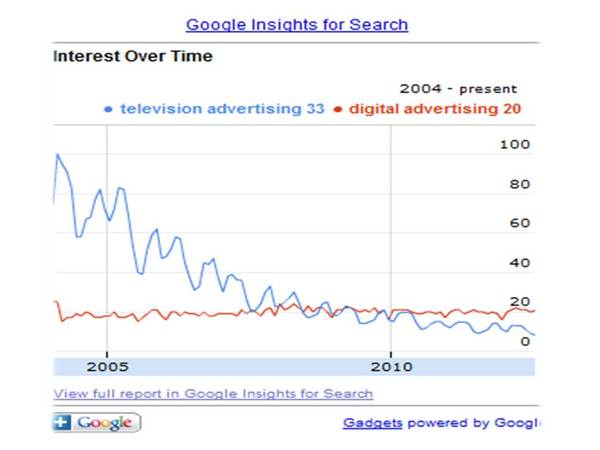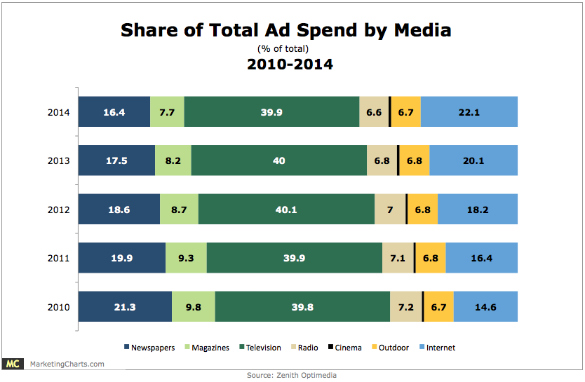If your business relies on advertising, did you know digital is the only media channel showing growth in this decade?
By next year according to Zenith Optimedia, digital is projected to be bigger than all media channels except television. This progress is tied to consumer buying behaviors where now:
- 90% of all purchase decisions begin online
- 75% of consumers shop online before they buy offline
- 85% are looking for an independent review
- 78% of people trust the recommendations of other people
- 14% of people trust advertising
- Only 18% of TV advertising campaign ever achieve a positive return on investment
(Source: eMarketer, comScore, WOMMA, webtrends)
These trends suggest a digital agency may be your most valuable business partner. Here are 7 best practices digital agencies should be doing.
1. DEFINE WHY YOUR WEBSITE EXISTS: A brand’s website is either a business asset or an expense. If it’s an asset, it exists for a business reason like: Generate sales, secure leads, increase trial, switch competitive users or identify key prospects. If the website has been created because “every brand has to have a website,” it’s an expense.
2. IDENTIFY KEY PERFORMANCE INDICATORS (KPI’S): “If you can’t measure it, you can’t manage it,” said Peter Drucker. Key Performance Indicators (KPI’s) are the actionable scorecard to keep your business strategy on track. They are selected measurements that provide visibility into the performance of a business. They enable decision makers to take action that achieve desired results. It’s not hard to measure or manage KPI’s. This brief video explains KPI’s and how to set up a scorecard for your business.
3. DETERMINE SEGMENTATION: For every business, a wide disparity exists between best and worst customers. Segmentation tells you what customers to spend time with and which ones not to waste time with. It can be based on sales-related behaviors or website behaviors (new vs. returning, time on site, key content viewed or take desired actions). Either way, audience segmentation helps accelerates business growth and makes your business more profitable
4. KNOW WHERE YOUR AUDIENCE COMES FROM: To drive people to your brand’s website, you’re going to have to spend money or time (or both) on paid media, paid search, search engine optimization and social media. Which ones work best? “Traffic Sources” and “Tags” tell you from an analytics tool like Google Analytics. They make it possible to determine Return on Ad Investment. Something you can improve upon and control.
5. LEARN FROM THE COMPETITION: Competitive analysis and intelligence presents opportunities in real time. For example, allergy products are a fiercely competitive category every Spring. Sales are heavy influenced by uncontrollable factors like the weather that varies geographically. Using competitive tracking tools like Compete and Alexa, a client of ours was able to measure website traffic of major allergy brands, understand their marketing and advertising strategy and use it to their brand’s advantage that Spring. A report from the television ad tracking service didn’t arrive until late Summer.
6. GAIN INSIGHTS THROUGH KEYWORDS: 80% of the traffic to a website begin with a search query. As a result, large lists of keywords are probably going to be generated for search volume and CPC (cost per click). They’re valuable for media buying but lists don’t usually reveal insights.
Here’s one way to get to insights – show keyword trends. Since we’re on the subject of advertising, here is a charts from Google Insights. The blue line measures search volume for television marketing; the red is for digital advertising. If these keywords were relevant to your business, which one would you emphasize to better meet the needs of your audience.

7. LISTEN TO THE VOICE OF CONSUMERS: You or your digital agency can’t tell you what consumers want from your brand online. Only consumers can. So ask them regularly. Have simple survey on the site and, once a quarter, asks just a few questions like: Why did you come to this site? Did you find what you were looking for? What would make you visit again? It doesn’t have to be fancy, just actionable.
These 7 best practices have 1 thing in common; they’re all based on generating business growth. Are they practices your digital agency is doing?






I as well as my pals were looking through the good tips and tricks found on your website
then unexpectedly I got a horrible feeling I never expressed respect to the web blog owner for those strategies.
My men had been certainly warmed to learn all of them and have in effect simply been taking advantage of them.
Appreciation for indeed being really kind as well as for making a choice on this form of really good areas millions of individuals are really wanting
to know about. My personal sincere apologies for
not expressing appreciation to sooner.
We stumbled over here from a different page and thought I might check things out.
I like what I see so i am just following you. Look forward
to looking over your web page again.